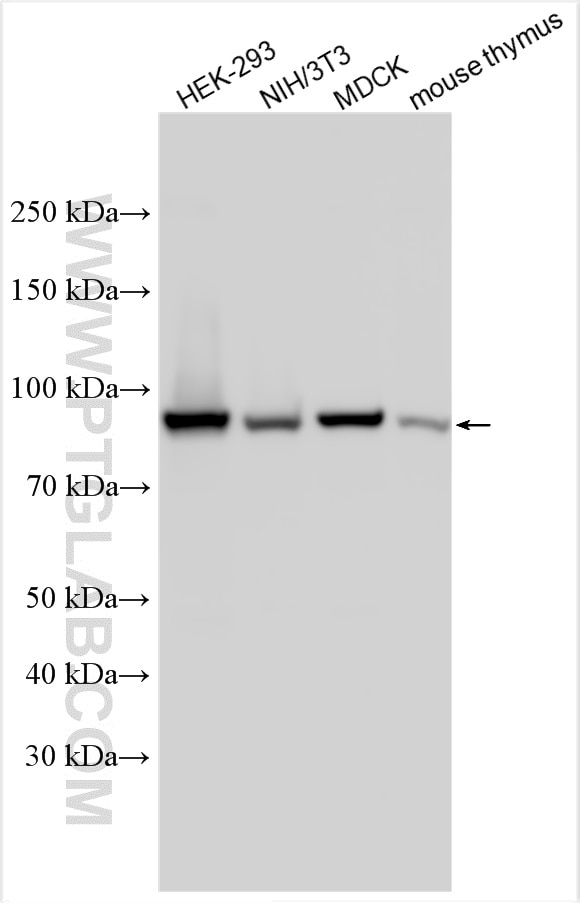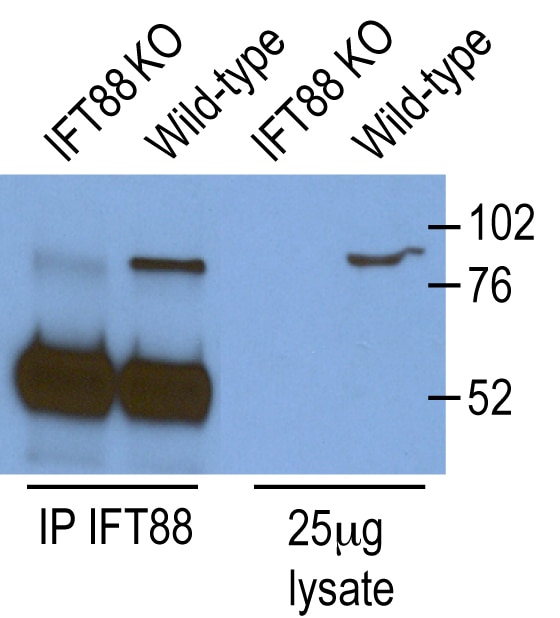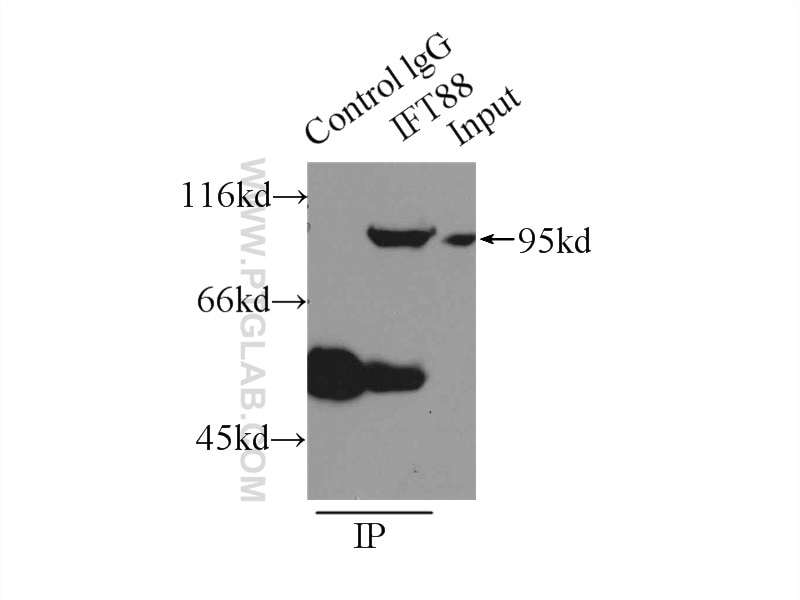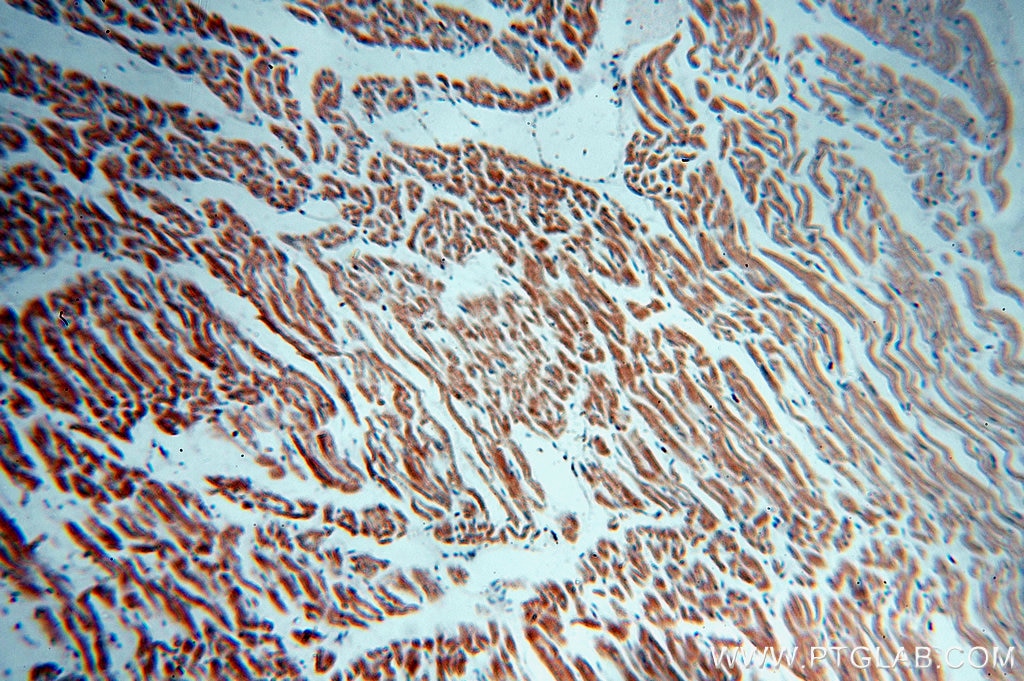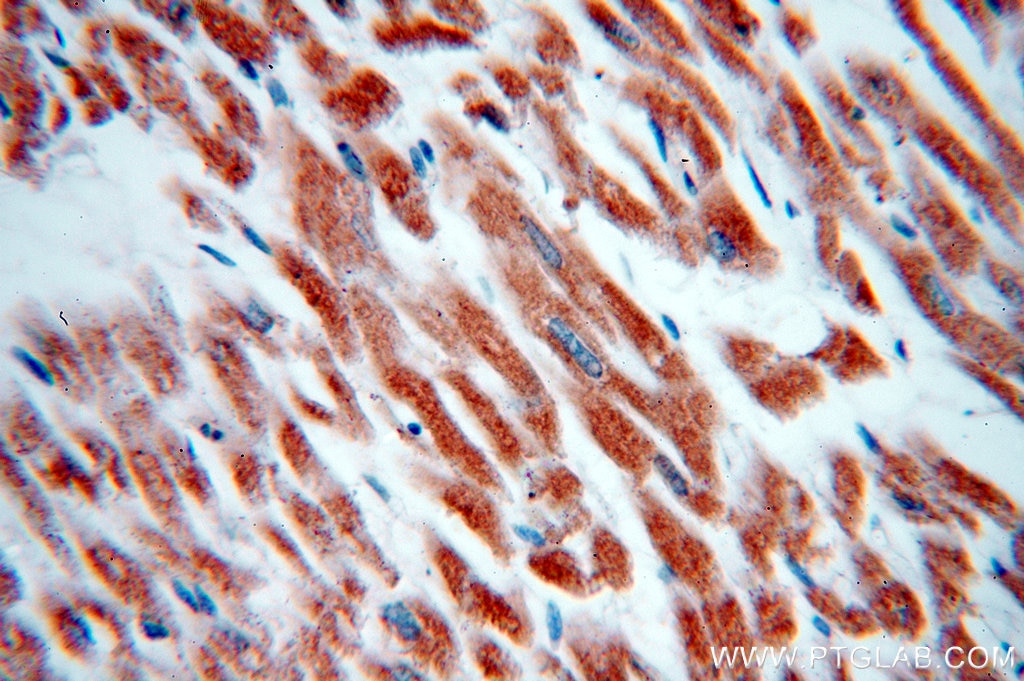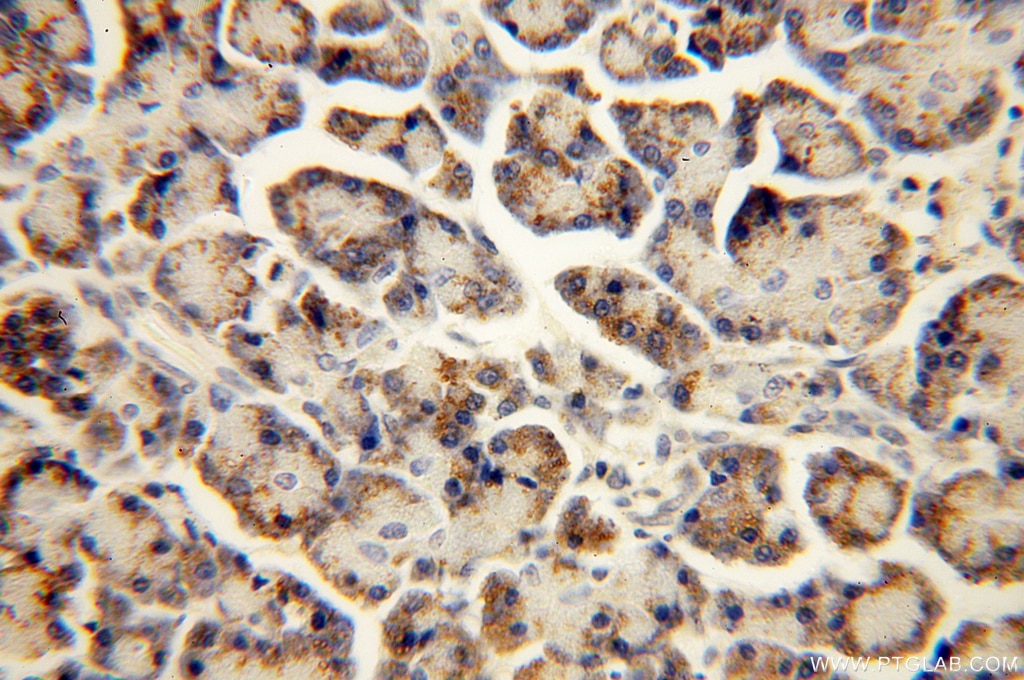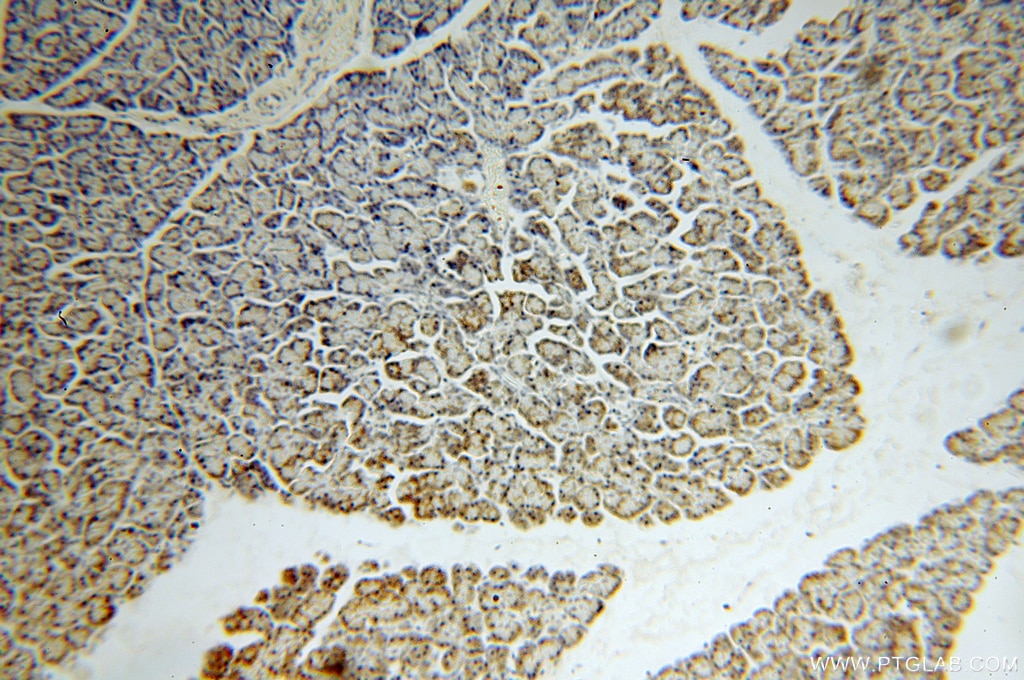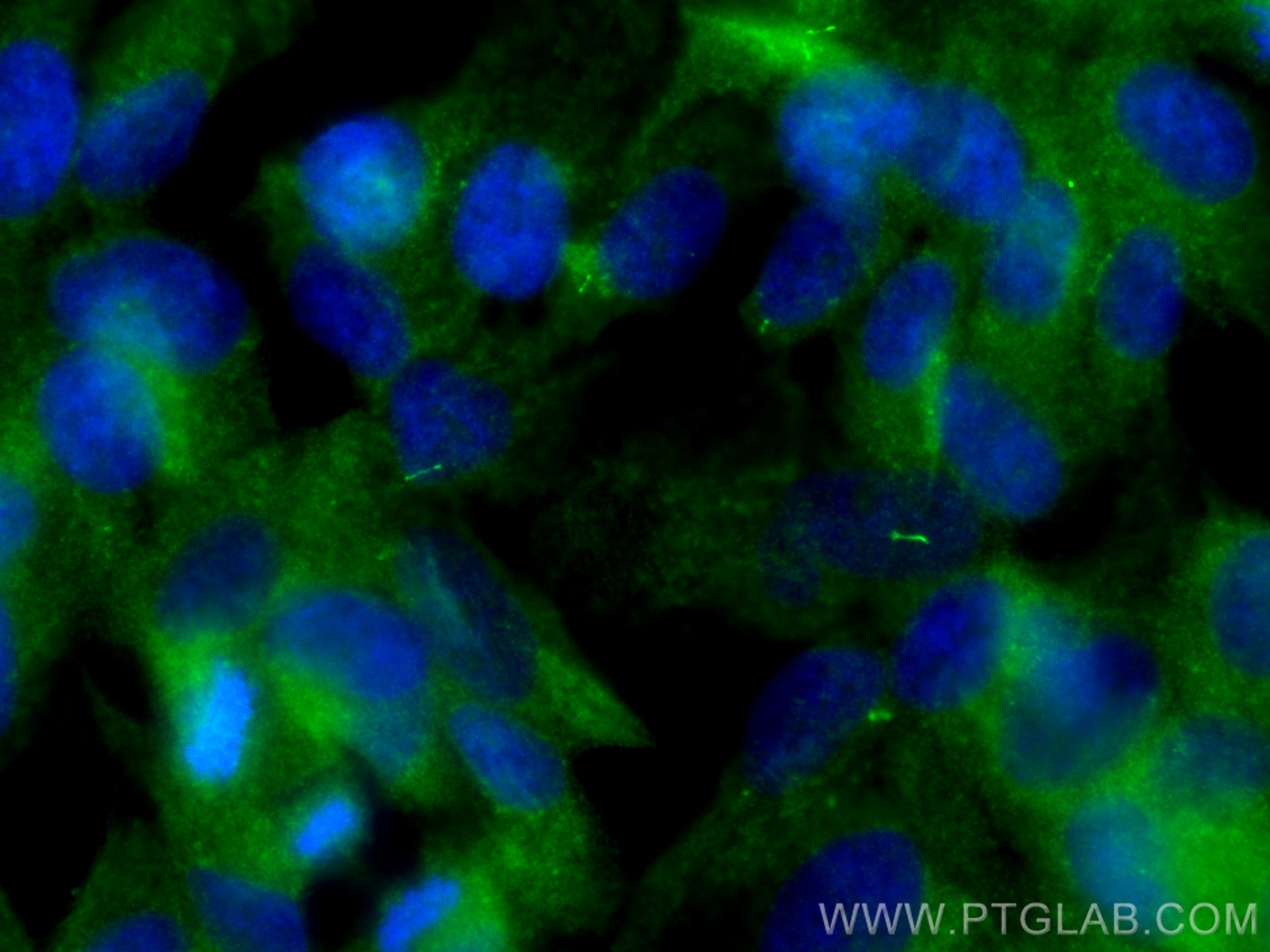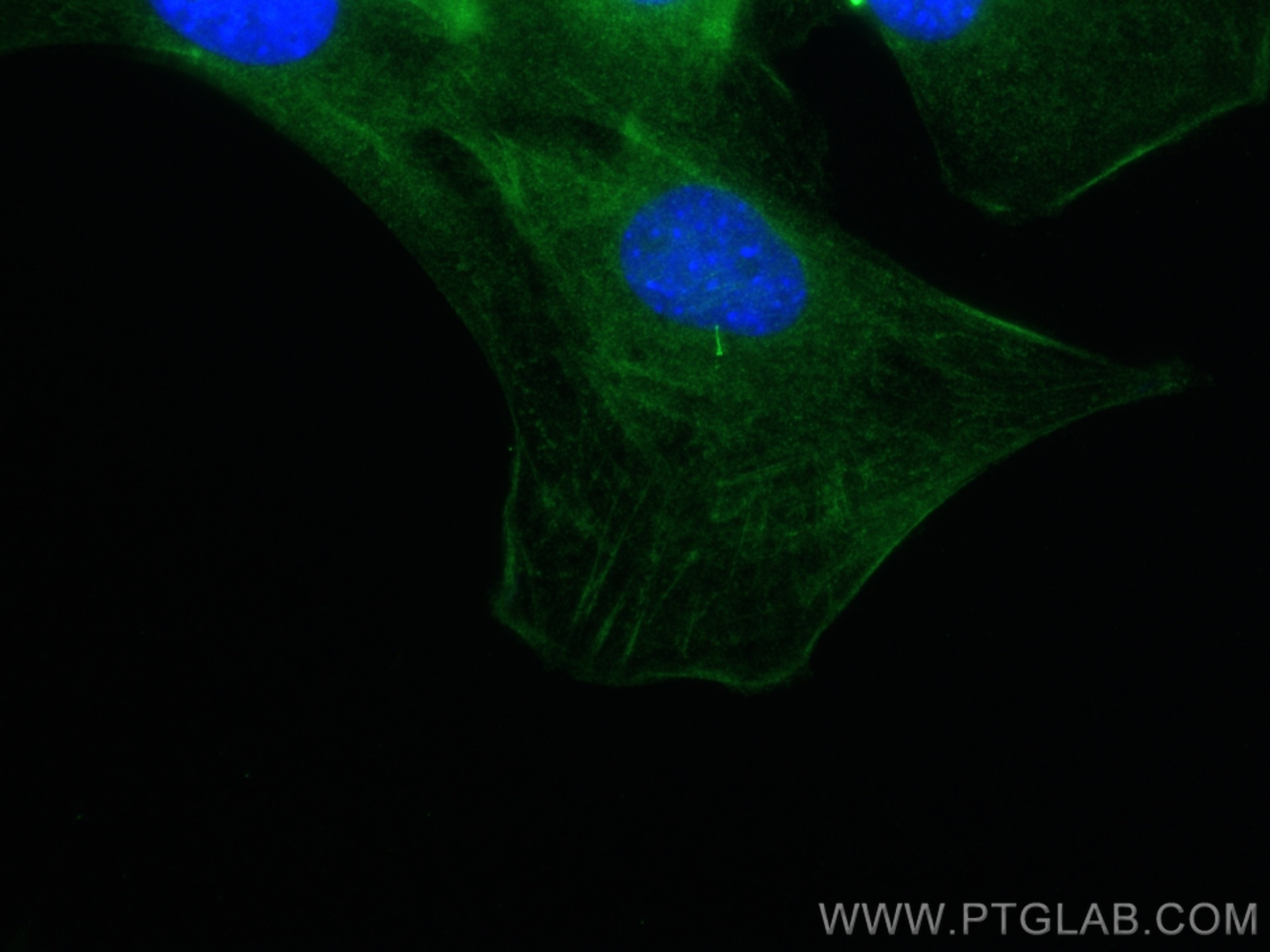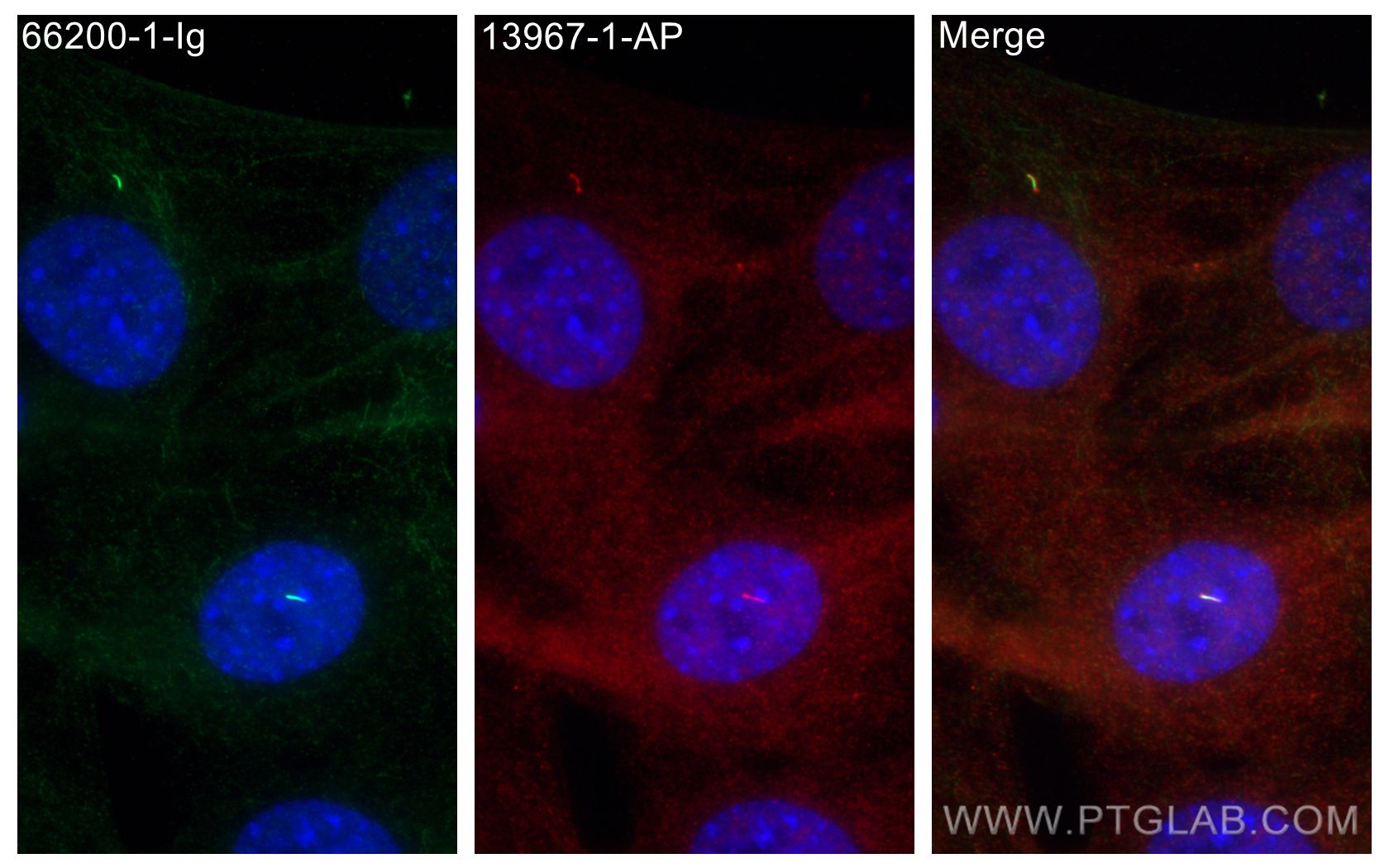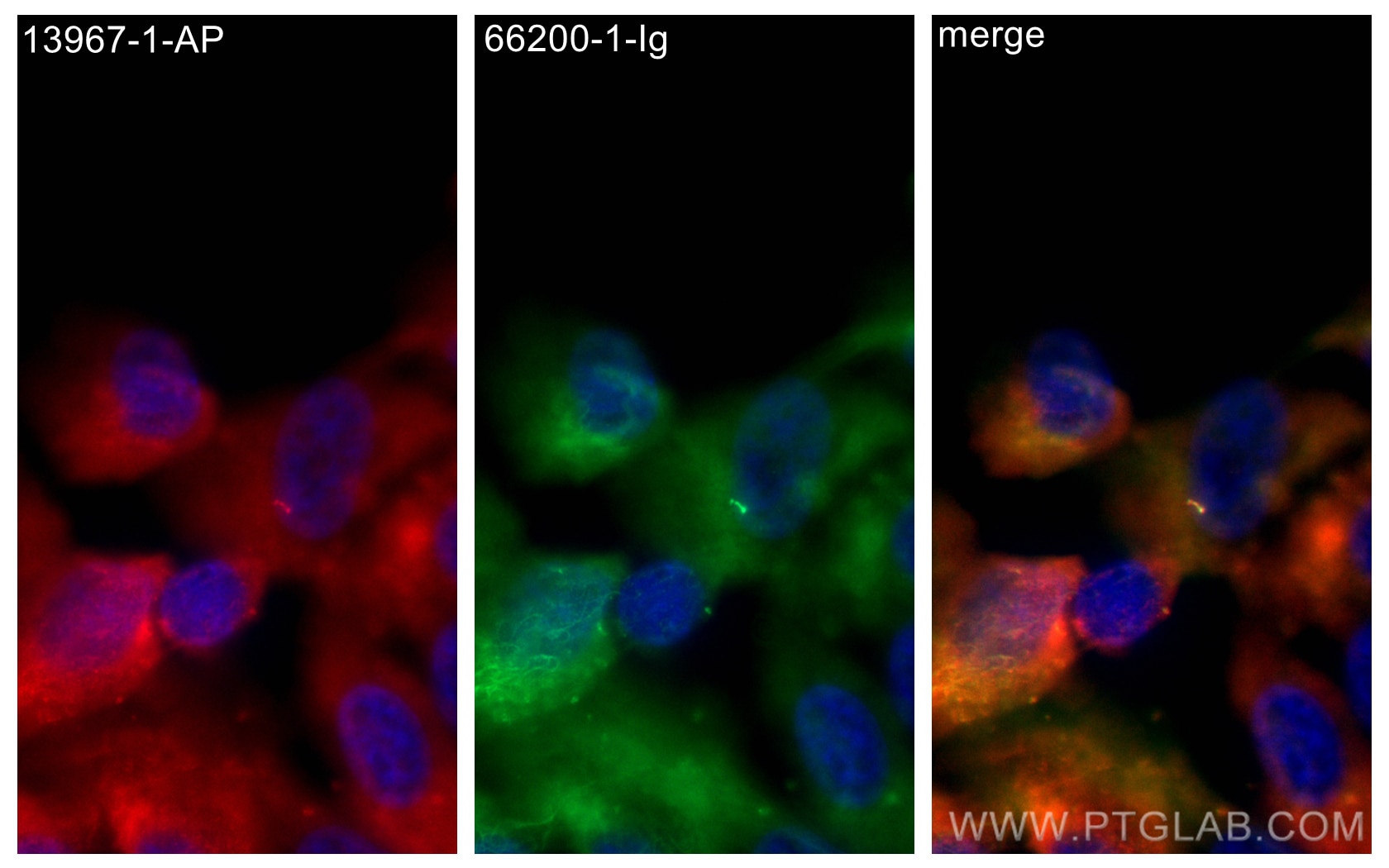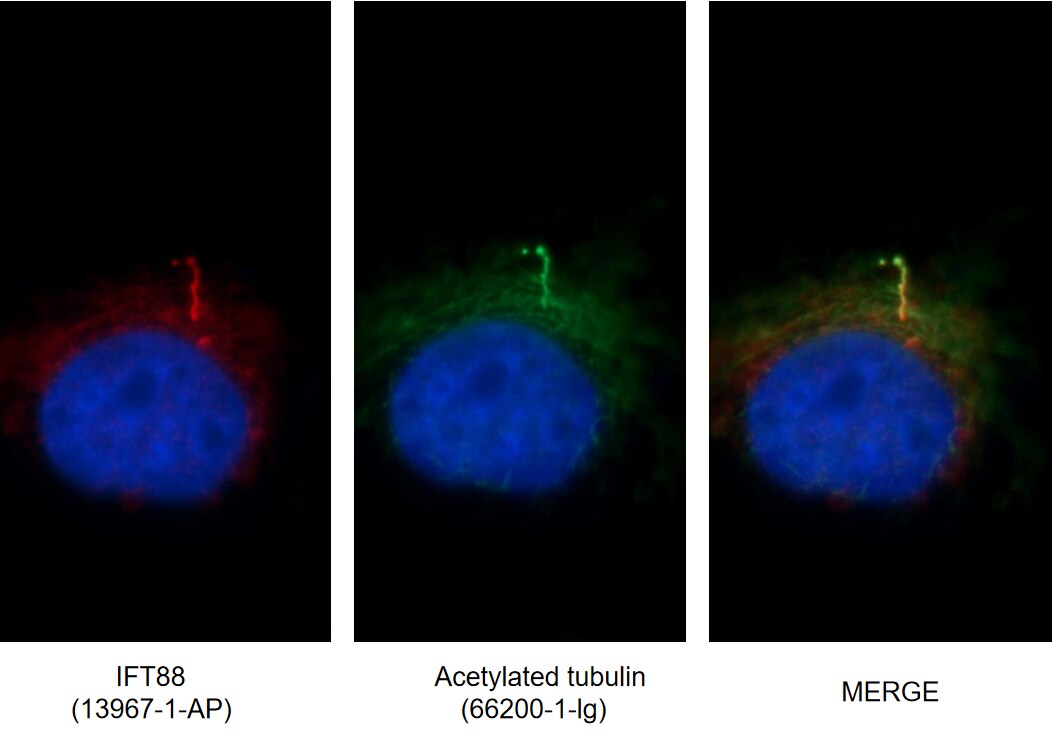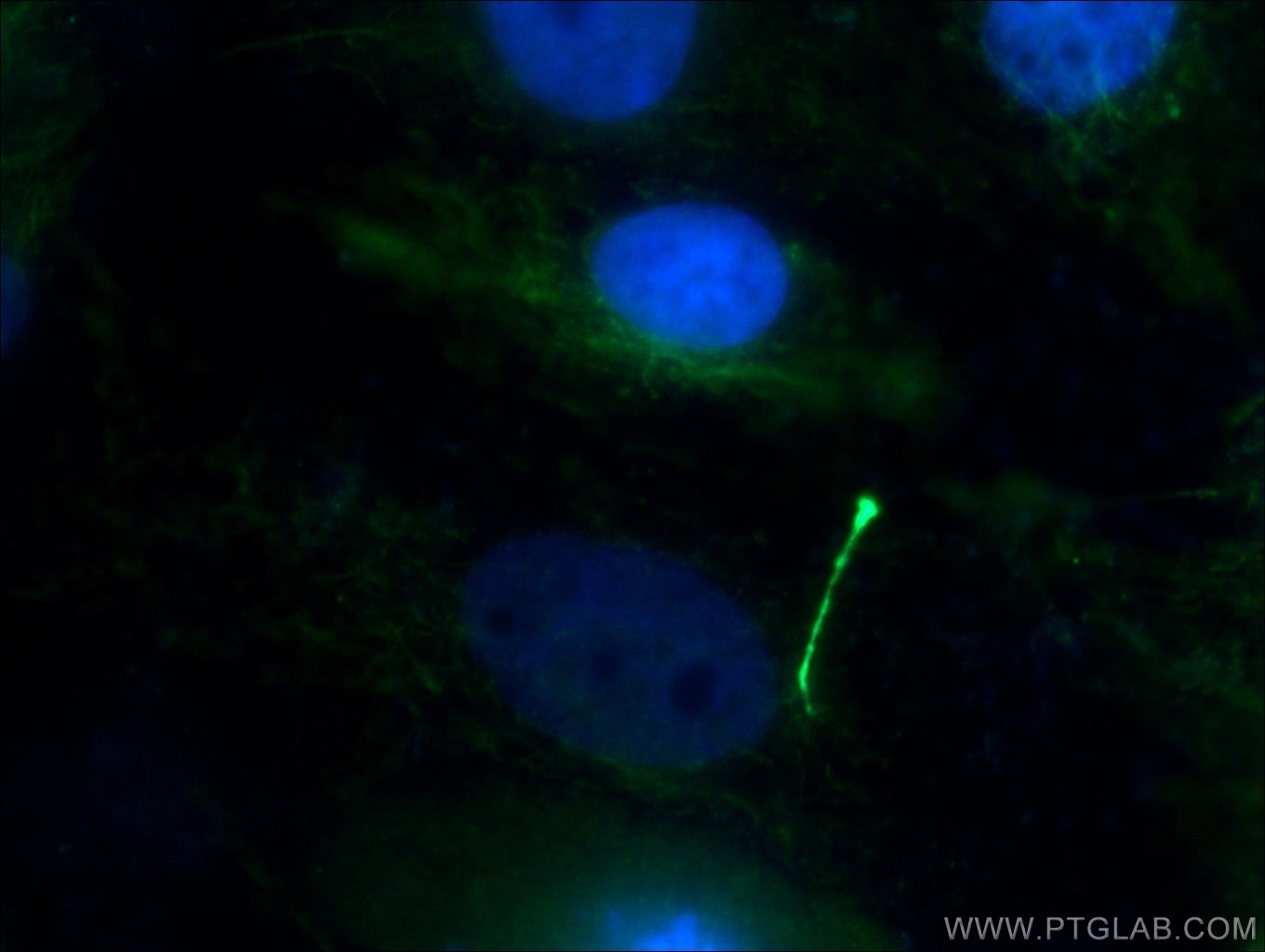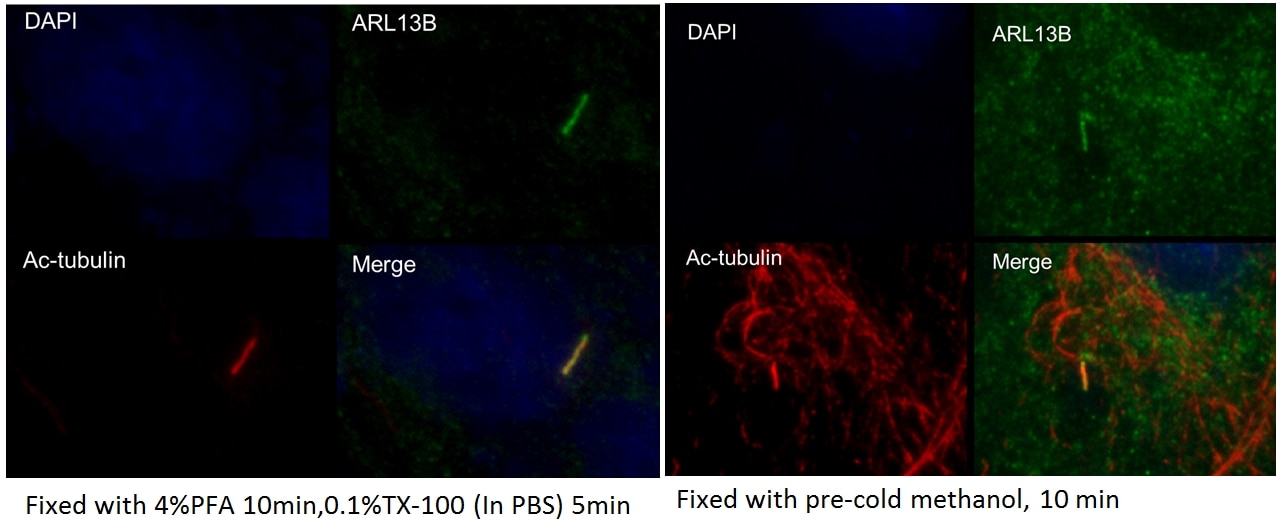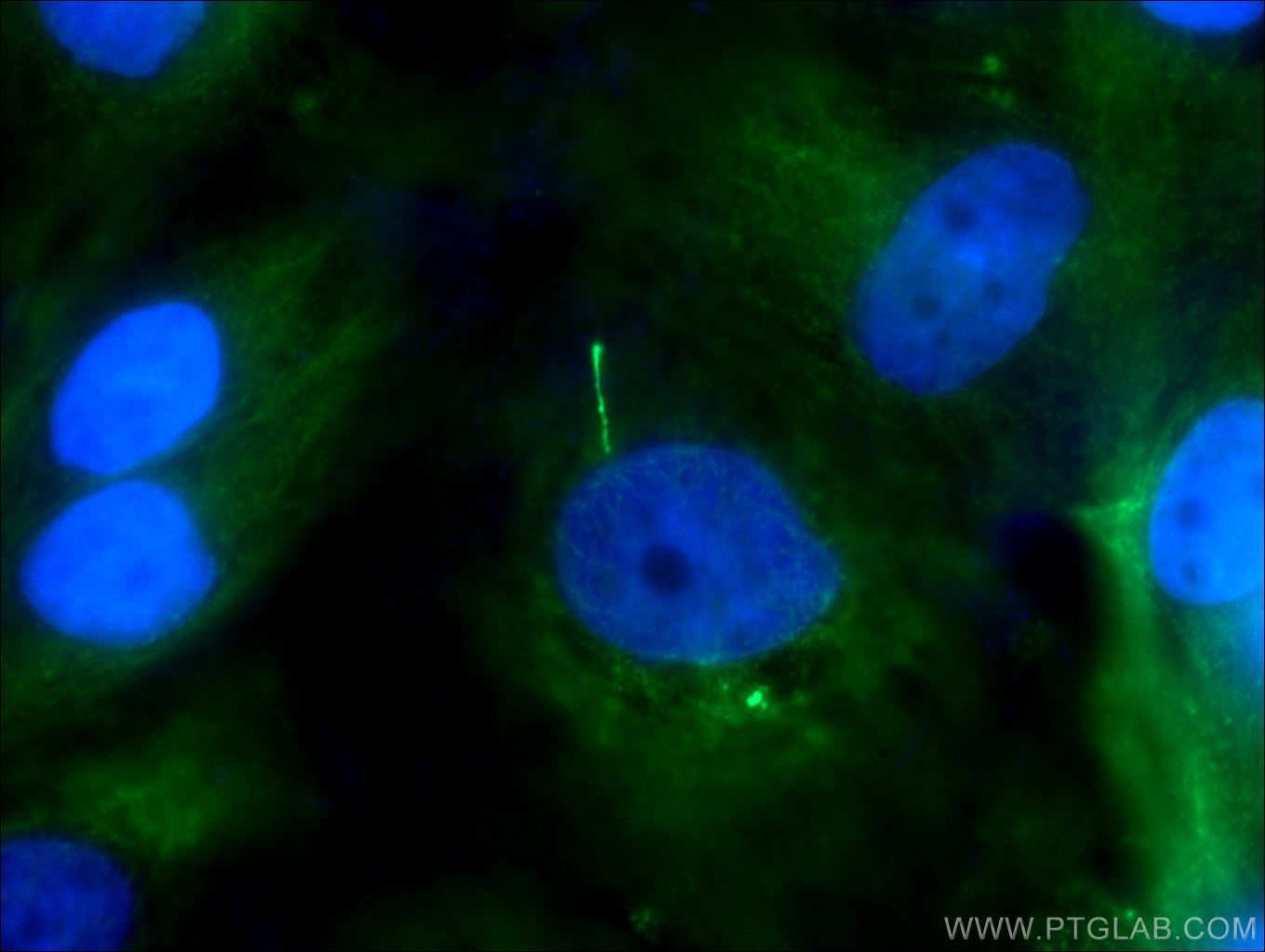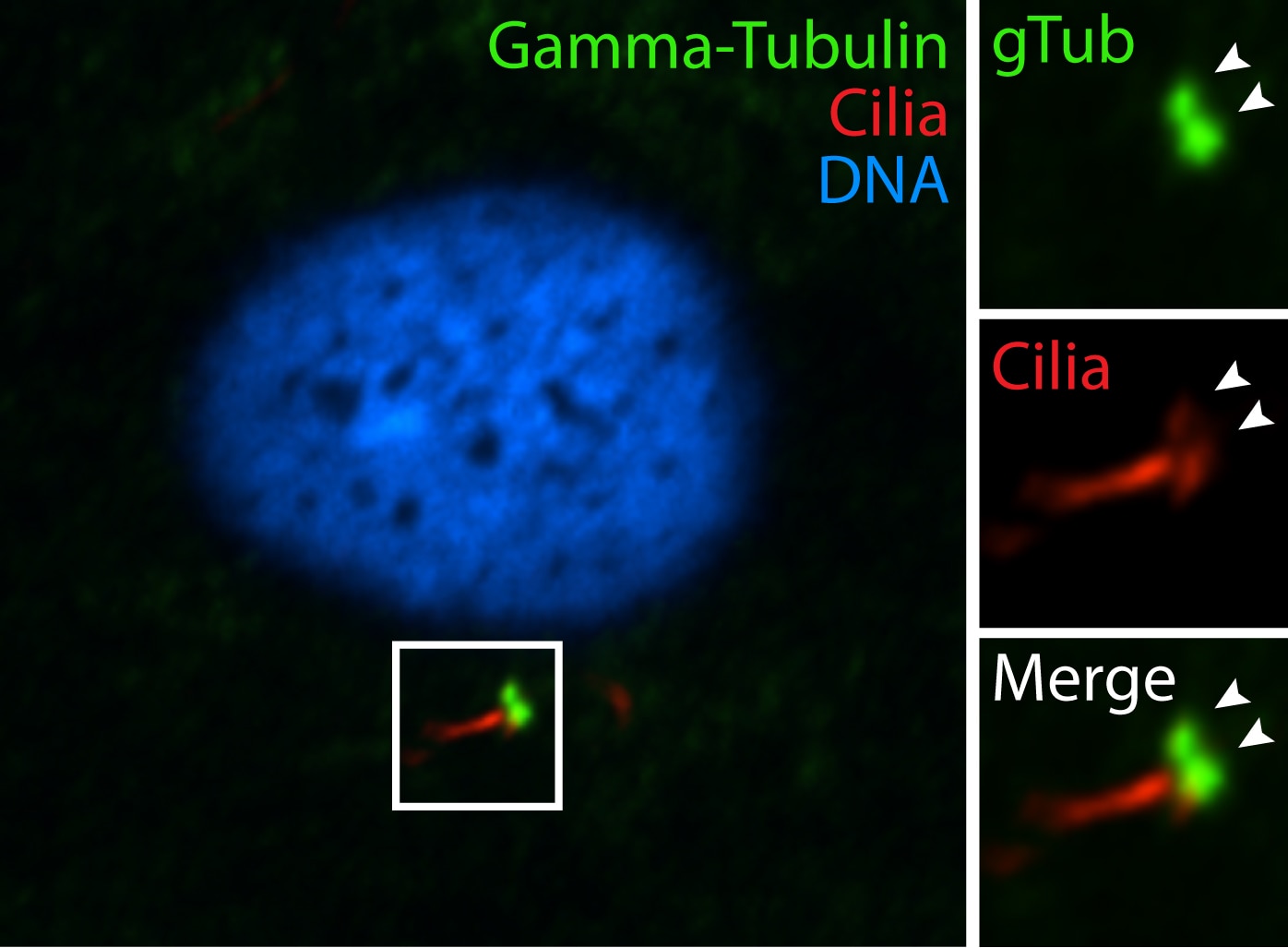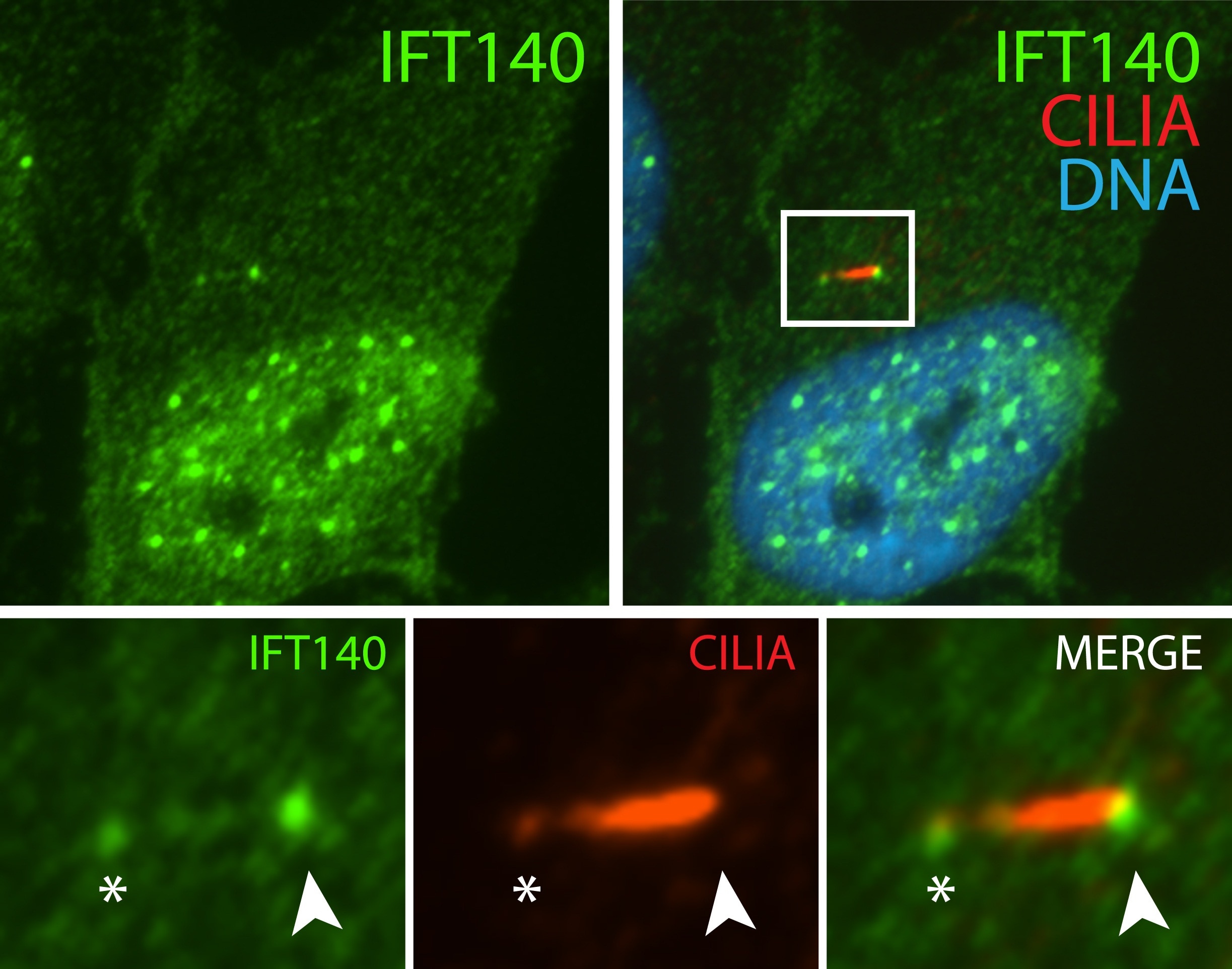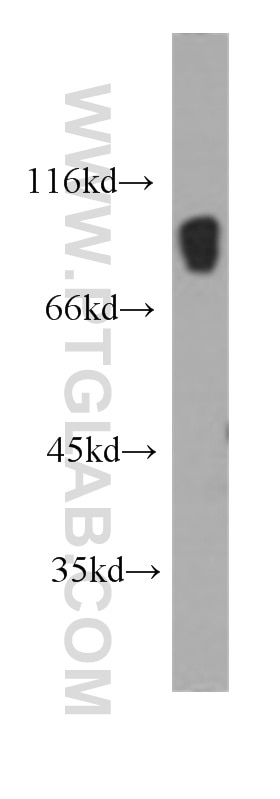- Phare
- Validé par KD/KO
Anticorps Polyclonal de lapin anti-IFT88
IFT88 Polyclonal Antibody for WB, IP, IF, IHC, ELISA
Hôte / Isotype
Lapin / IgG
Réactivité testée
canin, Humain, rat, souris et plus (3)
Applications
WB, IHC, IF/ICC, IP, CoIP, ELISA
Conjugaison
Non conjugué
346
N° de cat : 13967-1-AP
Synonymes
Galerie de données de validation
Applications testées
| Résultats positifs en WB | cellules HEK-293, cellules MDCK, cellules NIH/3T3, tissu de thymus de souris |
| Résultats positifs en IP | cellules knockout et cellules WT, cellules HEK-293 |
| Résultats positifs en IHC | tissu cardiaque humain, tissu pancréatique humain il est suggéré de démasquer l'antigène avec un tampon de TE buffer pH 9.0; (*) À défaut, 'le démasquage de l'antigène peut être 'effectué avec un tampon citrate pH 6,0. |
| Résultats positifs en IF/ICC | cellules hTERT-RPE1, cellules C2C12, cellules MDCK |
Dilution recommandée
| Application | Dilution |
|---|---|
| Western Blot (WB) | WB : 1:2000-1:12000 |
| Immunoprécipitation (IP) | IP : 0.5-4.0 ug for 1.0-3.0 mg of total protein lysate |
| Immunohistochimie (IHC) | IHC : 1:20-1:200 |
| Immunofluorescence (IF)/ICC | IF/ICC : 1:200-1:800 |
| It is recommended that this reagent should be titrated in each testing system to obtain optimal results. | |
| Sample-dependent, check data in validation data gallery | |
Applications publiées
| KD/KO | See 49 publications below |
| WB | See 145 publications below |
| IHC | See 5 publications below |
| IF | See 239 publications below |
| IP | See 4 publications below |
| CoIP | See 1 publications below |
Informations sur le produit
13967-1-AP cible IFT88 dans les applications de WB, IHC, IF/ICC, IP, CoIP, ELISA et montre une réactivité avec des échantillons canin, Humain, rat, souris
| Réactivité | canin, Humain, rat, souris |
| Réactivité citée | rat, canin, Humain, poisson-zèbre, porc, poulet, souris |
| Hôte / Isotype | Lapin / IgG |
| Clonalité | Polyclonal |
| Type | Anticorps |
| Immunogène | IFT88 Protéine recombinante Ag4980 |
| Nom complet | intraflagellar transport 88 homolog (Chlamydomonas) |
| Masse moléculaire calculée | 94 kDa |
| Poids moléculaire observé | 94 kDa |
| Numéro d’acquisition GenBank | BC030776 |
| Symbole du gène | IFT88 |
| Identification du gène (NCBI) | 8100 |
| Conjugaison | Non conjugué |
| Forme | Liquide |
| Méthode de purification | Purification par affinité contre l'antigène |
| Tampon de stockage | PBS avec azoture de sodium à 0,02 % et glycérol à 50 % pH 7,3 |
| Conditions de stockage | Stocker à -20°C. Stable pendant un an après l'expédition. L'aliquotage n'est pas nécessaire pour le stockage à -20oC Les 20ul contiennent 0,1% de BSA. |
Informations générales
Intraflagellar transport (IFT), mediated by molecular motors and IFT particles, is an important transport process that occurs in the cilium and has been shown to be essential for the assembly and maintenance of cilia and flagella in many organisms. IFT88 (intraflagellar transport protein 88; also known as TG737 or TTC10) is a component of IFT particles and required for cilium biogenesis. Defects in IFT88/Tg737 lead to polycystic kidney disease (11062270). IFT88 localizes to spindle poles during mitosis and is required for spindle orientation in mitosis (21441926). This antibody was raised against the C-terminal region of human IFT88 and can detect the endogenous level of IFT88.
Protocole
| Product Specific Protocols | |
|---|---|
| WB protocol for IFT88 antibody 13967-1-AP | Download protocol |
| IHC protocol for IFT88 antibody 13967-1-AP | Download protocol |
| IF protocol for IFT88 antibody 13967-1-AP | Download protocol |
| IP protocol for IFT88 antibody 13967-1-AP | Download protocol |
| Standard Protocols | |
|---|---|
| Click here to view our Standard Protocols |
Publications
| Species | Application | Title |
|---|---|---|
Science Apical abscission alters cell polarity and dismantles the primary cilium during neurogenesis. | ||
Nat Genet A transition zone complex regulates mammalian ciliogenesis and ciliary membrane composition. | ||
Nat Genet Mutations in PLK4, encoding a master regulator of centriole biogenesis, cause microcephaly, growth failure and retinopathy. |
Avis
The reviews below have been submitted by verified Proteintech customers who received an incentive forproviding their feedback.
FH Parijat (Verified Customer) (04-08-2024) | Good Antibody for IF.
|
FH Serhiy (Verified Customer) (01-04-2023) | This antibody detects Ift88 in ciliary axonemes of immunofluorescently stained IMCD3 cells (atteched image: red Ift88; green - gamma-tubulin) and mouse fibroblasts. We also tried to detect endogenous Ift88 in NIH3T3 cells by western blots and found that antibody detects several non-specific bands in addition to apparently specific one between the 75-100 kDa markers.
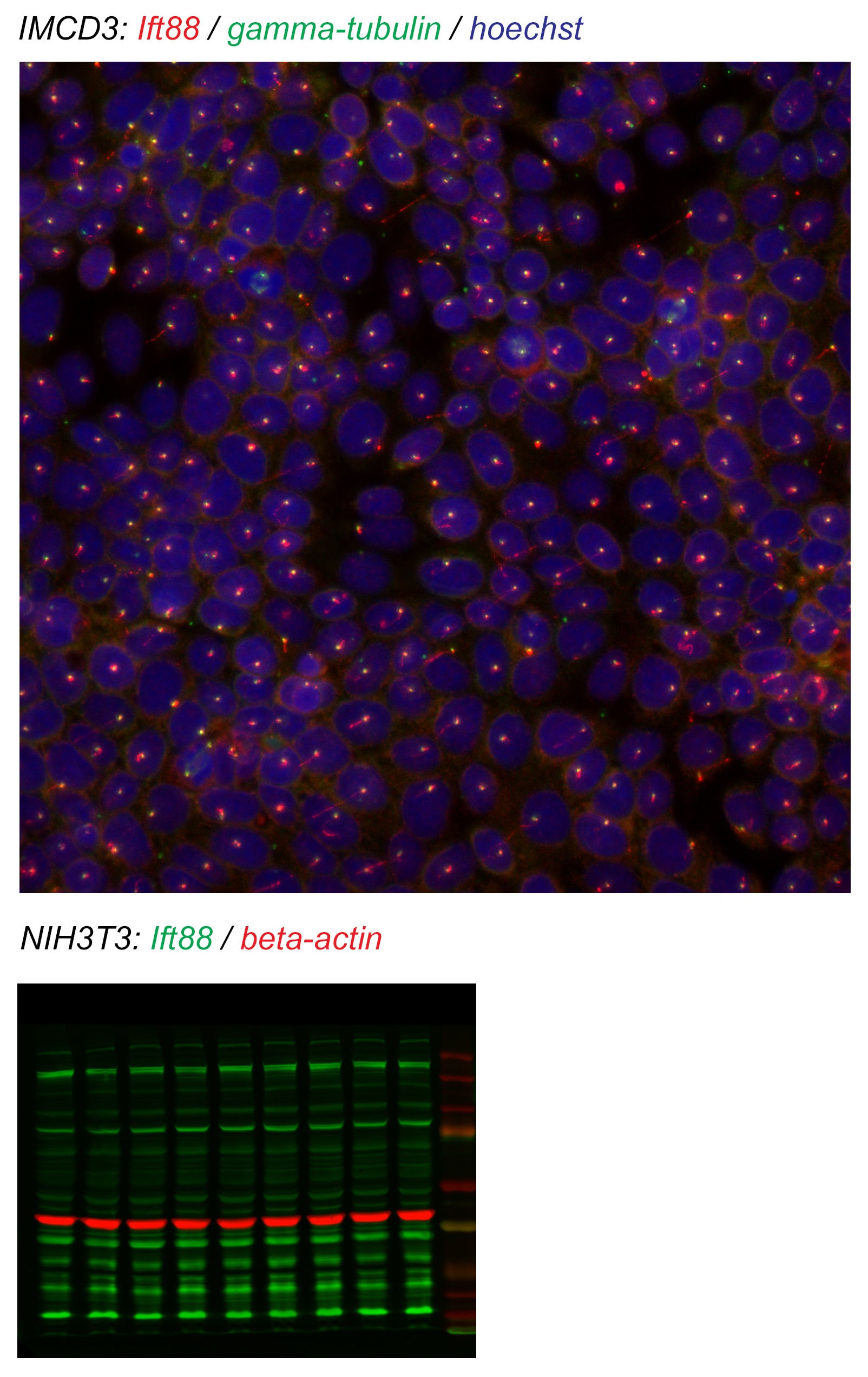 |
FH Charlotte (Verified Customer) (07-26-2022) | We have revealed IFT88 after stripping a couple of times. The signal remains nice and the unspecific bands might be due to lower stripping efficiency
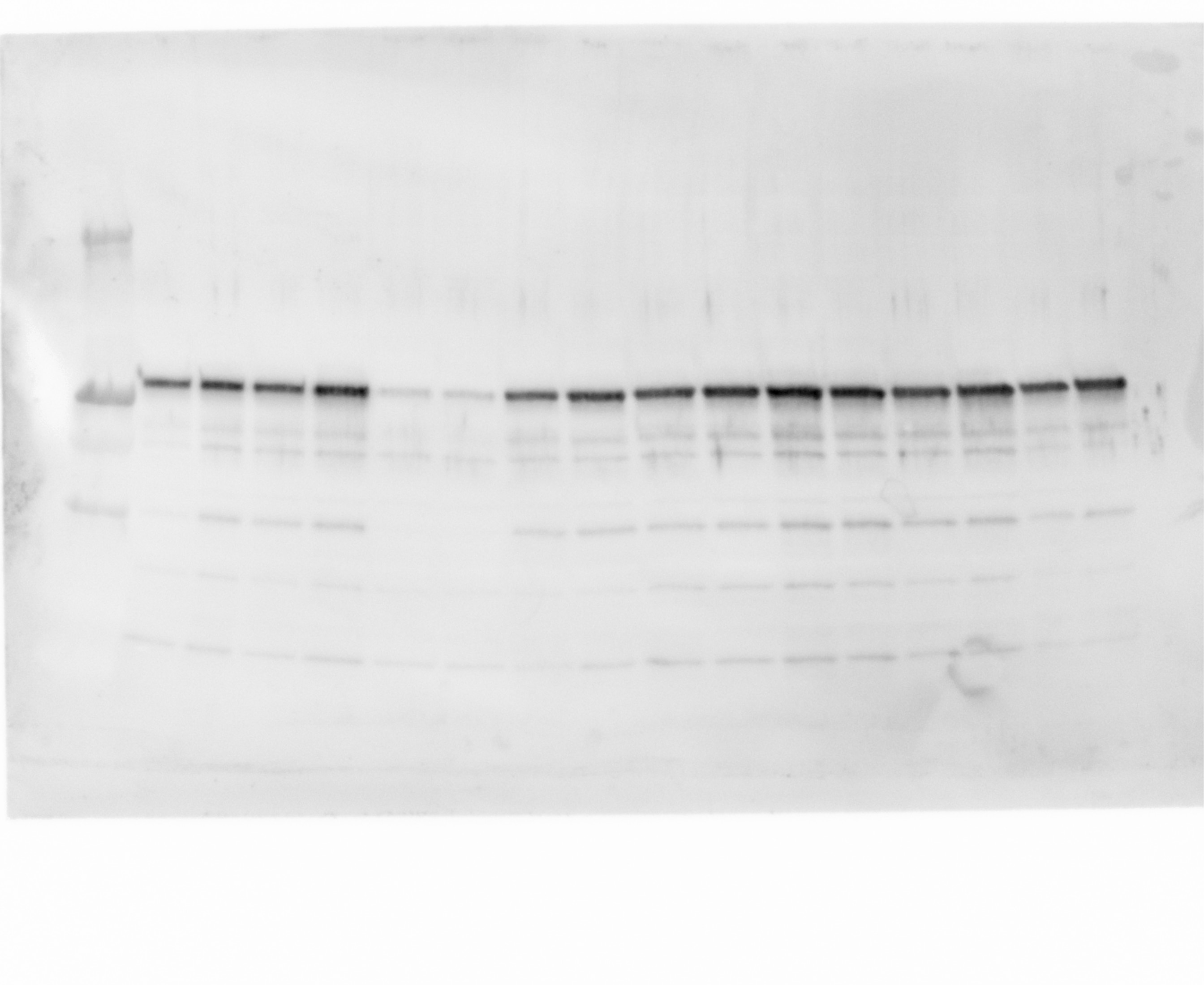 |
FH Stephen (Verified Customer) (02-08-2022) | works well in RPE cells stains Primary cilia seen by co-staining with Ac-Tubulin
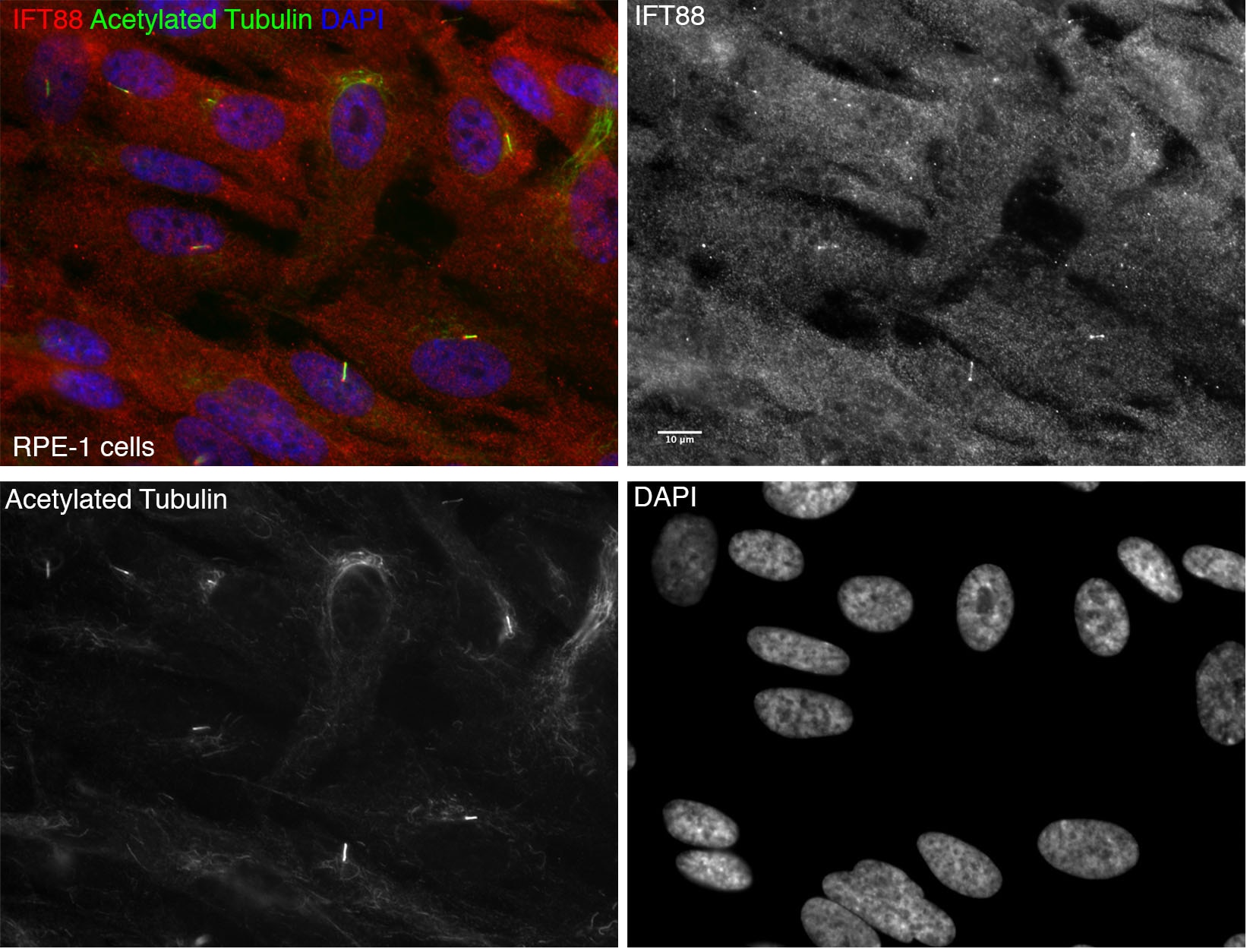 |
FH Boyan (Verified Customer) (01-31-2019) | Excellent. Works quite well both in WB and IF.
|
